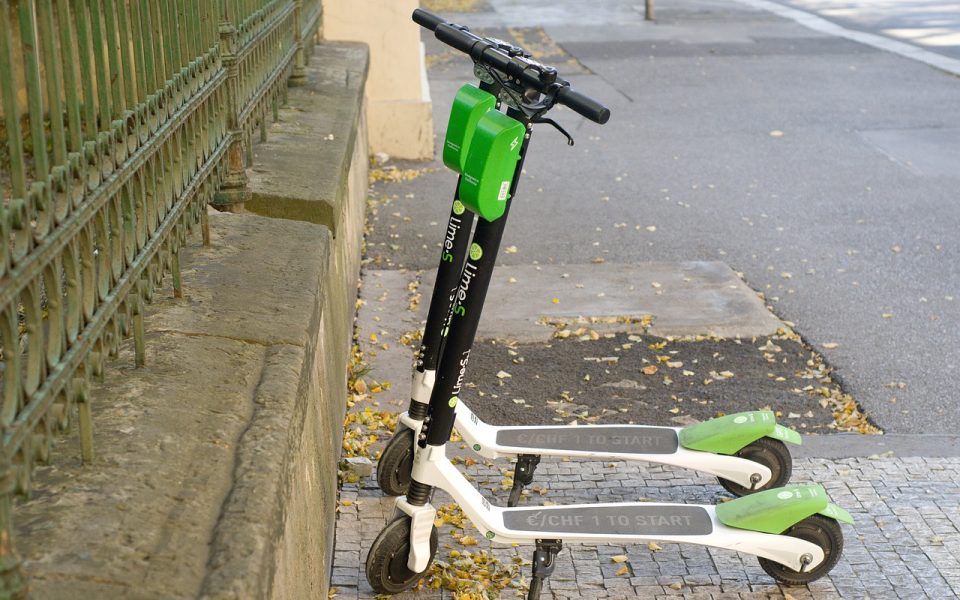After removing all electric scooters from the city in November, the city is re-introducing Bird and Lime scooters with new regulations passed by city council on Nov. 20. Lime distributed 100 initial scooters on Monday and Bird expects to deploy in March. Both are allowed to distribute up to 200 scooters. The following is a list of the new rules for riders and operators, in this case, Bird and Lime.
Rules for riders:
1. Only people 18 and older may ride the scooters. This one seems pretty self-explanatory. But if 16-year-olds can drive cars, maybe they should be able to ride the scooters too. The official requirement puts most of the onus on the operators by saying that “all operators shall provide a mechanism to ensure that riders are at least 18 years old before initiating a ride.” According to Chris Spencer in the city’s department of transportation, applications require driver’s licenses to be scanned by the scooters before riding. In the past, this rule has been broken by younger riders asking for older friends to scan their licenses. How the rule will be enforced this time around is yet to be determined. Scooter cops?
2. Scooters can only be ridden on city streets with a speed limit of 35 mph or less. Again, a straightforward rule, which makes more sense if you read rules 3-5.
3. Riders are required to follow all traffic laws like other vehicles, such as riding on the right side of the road, stopping at traffic signals and stop signs, and yielding to pedestrians.
4. Riding on sidewalks or in parking decks is prohibited. This is probably the biggest change from before. Many of the complaints from residents, especially those who frequent downtown, were that scooter riders on sidewalks posed a threat to pedestrians. Because the scooters are fairly new, there isn’t a whole lot of data showing how many and what kinds of accidents have been caused by them, but anecdotal evidence supports that those who live and work downtown will be happy about this new rule. Bad news for anyone thinking about hitting the Bellemeade Parking Deck spiral.
5. Riders may use bike lanes. Because of the sidewalk thing, scooters are expected to use the bike lanes and obey traffic laws as outlined in Rule No. 3. They’re essentially going to be treated like cyclists. Just faster and if possible, more annoying.
6. When parking the scooters on sidewalks, riders are required to leave at least a 6-foot wide clear pathway for pedestrians. Riders are prohibited from blocking sidewalk dining areas, bus stops, handicapped ramps or parking, driveways, loading zones, bike racks or benches. Many residents and business owners complained about scooters being abandoned in random places that were often an “eyesore” or just plain inconvenient. They can’t mandate designated areas for parking them, because the whole point is that they are dockless. This one, like most of these rules, is hard to enforce unless police are watching people get off of scooters every time.
7. Riders are not required to wear helmets but they are strongly encouraged to do so. Probably the most noncommittal of the rules. Despite the fact that the scooters can go up to 20 mph, riders aren’t required to wear helmets. Anecdotal evidence has shown that a lot of the hospital visits related to electric scooters are caused because people weren’t participating in this safety measure. In Santa Monica last year, Bird began offering helmets to riders after they were sued by the city. In Nashville, two riders were critically injured in a hit-and-run crash — neither riders were wearing helmets. We’ll see what happens.
In addition to rules
for riders, a new set of rules were put in place for operators (Bird and Lime).
Here are just a few key additions, cut and pasted:
8. Only scooters with reflectors or reflective paint on the base and handle-bar support column are allowed.
9. The maximum motor-assist speed shall be less than 20 miles per hour (mph) on level ground.
10. All standup electric scooters shall meet the North Carolina General Assembly (NCGA) requirements for lights during hours of darkness, including a front light that emits white light and a rear red reflector as described in G.S. 20-129, and all other applicable requirements of state law.
11. Every standup electric scooter shall have a customer service phone number that is in-service during all operating hours and clearly displayed and visible to the user.
12. All operators shall provide in-app messaging that notifies their users of the rules (outlined in numbers 1-7.
13. All operators shall provide monitor and keep a record of reported crashes involving standup electric scooters and send these reports to the City on a monthly basis
14. Any inoperable or unsafe standup electric scooter shall be removed from the right-of-way within 24 hours of notice by any means to the operator by any individual or entity, and shall be repaired before placing back into the City right-of-way.
15. The City may remove standup electric scooters from the right-of-way if it interferes with pedestrian or vehicular traffic or impedes or obstructs the right-of-way.
16. Licensee shall ensure that users may not initiate rides after 9 p.m. or before 6 a.m. each day.
Find the revised ordinances here.
Join the First Amendment Society, a membership that goes directly to funding TCB‘s newsroom.
We believe that reporting can save the world.
The TCB First Amendment Society recognizes the vital role of a free, unfettered press with a bundling of local experiences designed to build community, and unique engagements with our newsroom that will help you understand, and shape, local journalism’s critical role in uplifting the people in our cities.
All revenue goes directly into the newsroom as reporters’ salaries and freelance commissions.


Leave a Reply